
Gold and copper often occur together in polymetallic ore deposits in various sulfide, oxide, or native metal forms. Due to their complex mineral assemblages and variable distribution patterns, different gold-copper coexisting ores exhibit varying degrees of processability and extraction difficulty during mineral processing and metallurgical treatment.
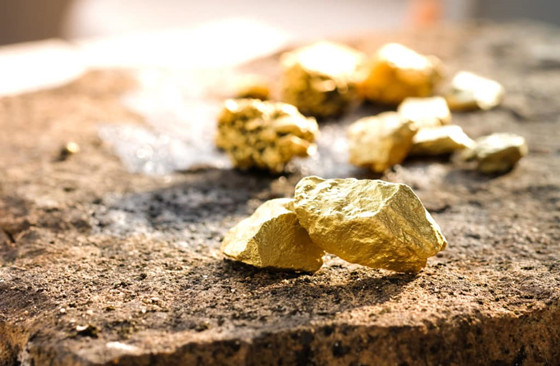
So, how can Gold be efficiently separated from copper? This article introduces five typical types of gold-copper coexisting ores and discusses the corresponding beneficiation processes, aiming to achieve efficient gold-copper separation and maximize resource utilization.
In gold-copper polymetallic ores, Gold and copper often coexist in complex mineral forms, primarily falling into the following categories:
1. Chalcopyrite
Copper Grade: 0.3%–1.5%
Gold Grade: 0.2–3.0 g/t
Mineralogical Characteristics: Gold mainly exists as fine-grained native Gold or as inclusions within chalcopyrite.
Recommended Process:
Priority flotation of copper, followed by cyanidation of flotation tailings.
Use xanthate collectors (e.g., butyl xanthate), with lime to adjust the pulp pH to 10–11 for efficient copper recovery (>20%).
Gold in tailings is recovered via the CIP (Carbon-in-Pulp) process, achieving 85–90% recovery.
If the gold content in the copper concentrate exceeds 5 g/t, consider roasting + cyanidation or direct smelting to recover associated Gold.
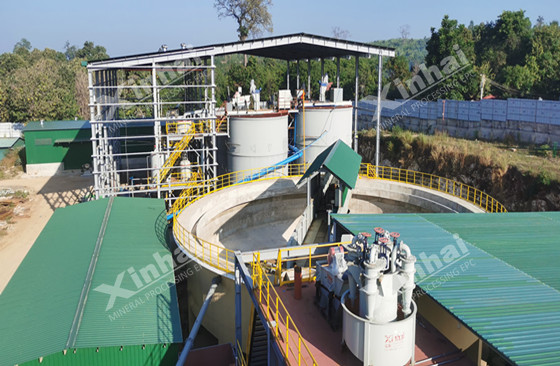
2. Bornite
Copper Grade: 1.0%–3.0%
Gold Grade: 0.5–2.0 g/t
Mineralogical Characteristics: Gold is closely associated with bornite and other copper sulfides, often as fine grains.
Processing Method:
Bornite has high floatability; recommend using a combined collector system (e.g., black + yellow collectors) under pH 10–11.
Copper recovery >85%; tailings processed via cyanide leaching, with leaching time ~24 hours to reach gold recovery >80%.
Apply regrinding and re-cleaning during flotation to minimize gold loss.
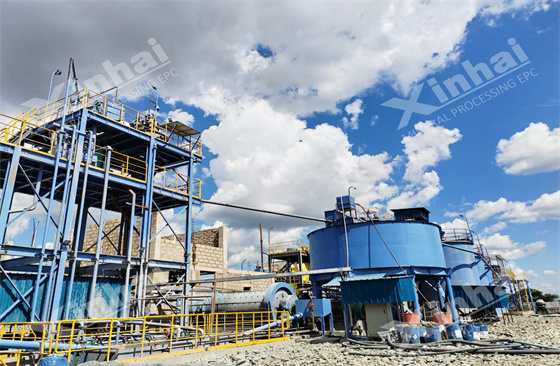
3. Copper-Bearing Oxide Ore (Azurite, Malachite + Native Gold)
Copper Grade: 0.5%~3.0%
Gold Grade: 0.3~5.0g/t
Mineralogical Characteristics: Copper exists as carbonate minerals, while Gold mainly occurs as free Gold, occasionally adsorbed or encapsulated.
Processing Method:
Cyanidation alone is inefficient due to soluble copper interference.
Apply ammonia leaching or weak acid pre-leaching to remove soluble copper and reduce cyanide consumption.
Follow with cyanide leaching, achieving 75–85% gold recovery.
For certain ores, an ammonia–cyanide leaching system is applicable, enabling simultaneous Gold and copper extraction.
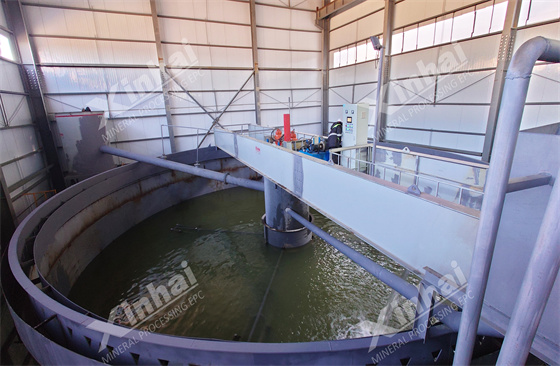
4. Arsenopyrite/Pyrite-Type Refractory Gold-Copper Ore
Copper Grade: 0.2%–1.5%
Gold Grade: 1–8 g/t (can exceed 10 g/t)
Mineralogical Characteristics: Gold is predominantly ultra-fine and encapsulated in sulfides (mainly arsenopyrite and pyrite), often resulting in low recovery (<30%) with direct cyanidation.
Challenges: High arsenic, sulfur, and antimony contents pose environmental and metallurgical difficulties.
Recommended Pre-treatment + Cyanidation Process Options:
Roasting: Medium-temperature roasting (500–650°C) to break sulfide structure; acid-washing of calcines before cyanidation.
BIOX: Use of acidophilic bacteria (e.g., Acidithiobacillus ferrooxidans) to oxidize sulfides biologically.
POX (Pressure Oxidation): Carried out at >200°C and >1.5 MPa for complete liberation of locked Gold, achieving >90% recovery; however, high capital and OPEX are required.
Selection depends on ore characteristics such as sulfur/arsenic content, gold grain size, and impurity levels.
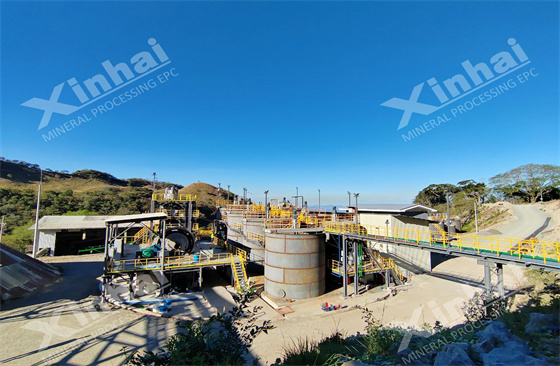
5. Native Copper + Native Gold Ore
Copper Grade: 2%–4%
Gold Grade: 0.5–3 g/t
Mineralogical Characteristics: Both copper and Gold occur in native form and may easily be lost to tailings.
Processing Method:
Apply gravity separation + flotation.
Use jigging or shaker tables to recover coarse native metals first, followed by mild flotation to collect residual copper minerals.
In the cyanidation stage, use copper suppressants (e.g., sodium thiosulfate, ammonia-based complexing agents) to prevent native copper from consuming cyanide, maintaining NaCN concentration <0.05% to ensure stable gold recovery (80–90%).
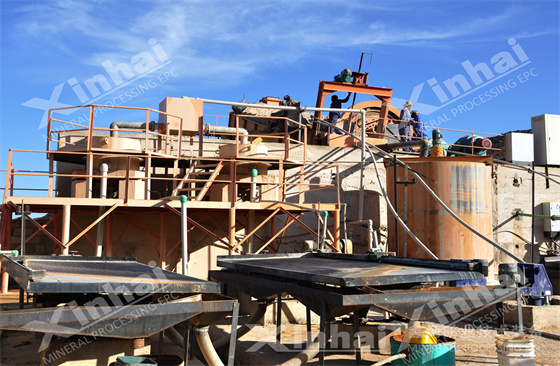
Identifying the type of ore is crucial for selecting the most appropriate processing method. Key factors to examine include the mode of copper occurrence, the gold particle size, and the presence of gangue minerals or deleterious elements.
By classifying ore types and applying targeted techniques—such as flotation, cyanidation, or pre-treatment followed by gold extraction—you can enhance the separation and recovery of Gold and copper, thereby improving resource utilization efficiency.
If you're seeking a customized process flow based on the mineralogical characteristics of your ore, get in touch with Xinhai Mining. We offer comprehensive EPC+M+O services, including laboratory testing, process design, equipment manufacturing, and plant construction—supporting you in building efficient, environmentally friendly, and sustainable gold-copper processing systems.
To find out more about our products and solutions, please fill out the form below and one of our experts will get back to you shortly.